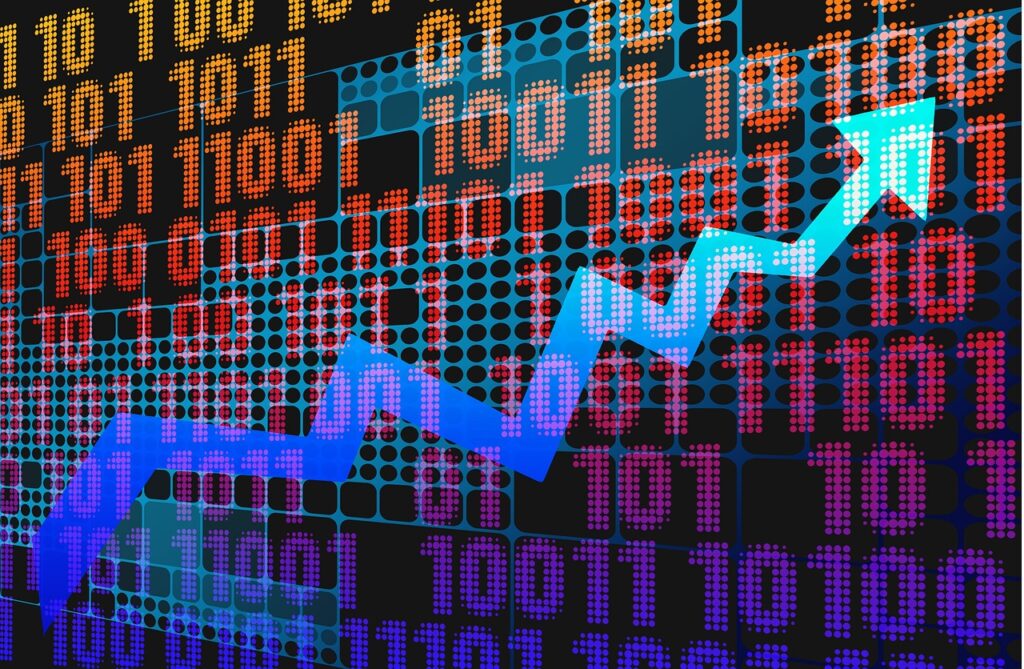
Current State of the American Economy: Key Insights and Challenges:
The American economy, one of the largest and most complex in the world, is going through a period of uncertainty. From the effects of the COVID-19 pandemic to changes in global markets and domestic policies, the country’s economic outlook is shaped by several factors. In this article, we will explore the current state of the economy, focusing on growth, inflation, unemployment, and the role of the Federal Reserve in shaping monetary policy.
1. Economic Growth: A Slow but Steady Recovery:
The American economy experienced a strong recovery in 2021 as it emerged from a deep recession caused by the pandemic. However, growth has slowed in 2023 and early 2024. The annual GDP growth rate has declined, indicating a more cautious trend ahead. Disruptions in the global supply chain, labor shortages, and the effects of rising energy prices have made it challenging for the economy to return to pre-pandemic levels. Despite these obstacles, consumer spending has remained relatively strong, supported by a robust job market and federal stimulus efforts.
2. Inflation: A Persistent Concern:
Inflation has been one of the most significant economic issues in America since 2021. The Consumer Price Index (CPI) has consistently shown increases in the prices of various goods and services, particularly in the housing, food, and energy sectors. This persistent inflationary pressure is a result of supply-side constraints and increased demand due to the reopening of the economy. In response, the Federal Reserve has aggressively raised interest rates to control inflation and stabilize prices. While this has helped alleviate some inflationary pressures, it has also increased the cost of borrowing, which could impact consumer spending and business investment in the future.

3. Unemployment: A Tight Labor Market:
The job market in the United States remains relatively strong, with the unemployment rate falling to historic lows. At the beginning of 2024, the unemployment rate is around 3.5%, close to pre-pandemic levels. This reflects a tight labor market where companies are struggling to fill vacancies across various industries. However, this labor shortage has contributed to wage inflation, as businesses are offering higher wages to attract and retain workers. While this is beneficial for employees in the short term, it could increase inflationary pressures and pose challenges for companies trying to control costs.
4. The Federal Reserve’s Role: Taming Inflation with Rate Hikes:
The Federal Reserve has played a leading role in the fight against inflation through a series of interest rate hikes. The central bank has raised rates multiple times since 2022, making borrowing more expensive for businesses and consumers. The aim is to reduce demand and cool inflation. While these rate increases are necessary to stabilize the economy, they also present risks. Higher rates can slow economic growth, potentially leading to a recession. Additionally, the high cost of borrowing can put pressure on industries that rely on financing, such as real estate and consumer goods.
5. Challenges Ahead: Geopolitical Risks and Market Volatility:
In addition to domestic economic concerns, the U.S. economy is facing external challenges, including geopolitical risks. Ongoing tensions with major economic partners like China and Russia impact trade, supply chains, and financial markets. Uncertainty regarding global commodity prices, particularly energy, adds to the instability. Stock markets have also experienced significant volatility as investors react to domestic and international uncertainties. This volatility may persist, especially if inflation remains stubborn or if geopolitical tensions escalate.
The Current State of the U.S. Economy: Key Insights and Challenges Ahead
The U.S. economy, one of the largest and most complex in the world, has been navigating a period of uncertainty. From the impact of the COVID-19 pandemic to shifts in global markets and domestic policy, the nation’s economic outlook is shaped by a variety of factors. In this article, we’ll explore the current state of the economy, focusing on growth, inflation, unemployment, and the Federal Reserve’s role in shaping monetary policy.
1. Economic Growth: A Slow but Steady Recovery
The U.S. economy experienced a strong recovery in 2021 as it rebounded from the deep recession caused by the pandemic. However, growth has slowed in 2023 and early 2024. The annual GDP growth rate has dipped, signaling a more cautious trajectory ahead.
The ongoing effects of global supply chain disruptions, labor shortages, and the fallout from rising energy prices have made it challenging for the economy to return to pre-pandemic levels of growth. Despite these obstacles, consumer spending remains relatively strong, supported by a resilient job market and federal stimulus efforts.
2. Inflation: A Persistent Concern
Inflation has been one of the most pressing economic issues in the U.S. since 2021. The Consumer Price Index (CPI) has consistently shown price increases across a wide array of goods and services, particularly in housing, food, and energy sectors. This persistent inflationary pressure is a result of both supply-side constraints and increased demand as the economy reopens.
In response, the Federal Reserve has been aggressively raising interest rates to tame inflation and stabilize prices. While this has helped curb some of the inflationary pressures, it has also led to higher borrowing costs, which could dampen consumer spending and business investment in the future.
3. Unemployment: A Tight Labor Market
The U.S. job market has remained relatively strong, with unemployment rates dropping to historic lows. As of early 2024, the unemployment rate is hovering around 3.5%, near its pre-pandemic levels. This indicates a tight labor market, where companies are still struggling to fill vacancies across various industries.
However, this labor shortage has contributed to wage inflation, as businesses are offering higher pay to attract and retain workers. While this benefits employees in the short term, it may add to inflationary pressures and create challenges for businesses trying to control costs.
4. The Federal Reserve’s Role: Taming Inflation with Rate Hikes
The Federal Reserve has been at the forefront of efforts to combat inflation through a series of interest rate hikes. The central bank has raised rates multiple times since 2022, making borrowing more expensive for businesses and consumers alike. This is intended to reduce demand and cool down inflation.
While these rate hikes are necessary to stabilize the economy, they also present risks. Higher rates can slow economic growth, potentially leading to a recession. Moreover, the higher cost of borrowing could strain industries reliant on financing, such as real estate and consumer goods.
5. Challenges Ahead: Geopolitical Risks and Market Volatility:
In addition to domestic economic concerns, the U.S. economy faces external challenges, including geopolitical risks. Ongoing tensions with major economic partners, such as China and Russia, have implications for trade, supply chains, and financial markets. Uncertainty around global commodity prices, especially energy, adds to the volatility.
Stock markets have also experienced significant fluctuations, as investors react to both domestic and international uncertainties. This volatility may continue, particularly if inflation remains stubborn or if geopolitical tensions escalate.
6. Looking Forward: A Mixed Economic Outlook:
The American economy is currently facing a delicate balance. While key economic indicators such as unemployment and consumer spending remain relatively strong, inflation, rising interest rates, and global uncertainties could pose challenges in the near future. Experts are divided on whether the U.S. can avoid a recession in 2024, but many agree that growth is likely to remain sluggish. In this environment, the role of policymakers will be crucial in determining how the economy navigates these adverse conditions and whether recovery can be sustained without overheating or falling into a downturn.
Conclusion: Uncertainty Looms, but Resilience Persists:
The American economy is at a turning point. While signs of strength such as low unemployment and strong consumer spending are present, inflation, high interest rates, and global uncertainties pose risks for the future. Policymakers’ responses will shape the direction of the economy in the coming months as the country navigates recovery from past disruptions while facing new challenges. Ultimately, the path forward for the American economy will depend on a combination of internal policies, external factors, and global economic trends, which are difficult to predict with certainty. However, it is clear that the resilience and adaptability of the American economy will be tested in the years to come.